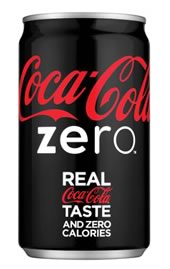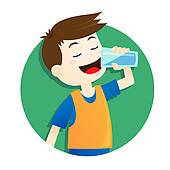Confessions of a Coke Zero Loving Mom by Zoe Richmond
As the calendar ticks over to 2017, New Year’s resolutions are plentiful. Usually, getting more exercise and eating healthy is top of the list. Hence, the reason gyms are in full throttle advertising mode.
There is one ad that stood out in the crowd, The Balanced Calorie Initiative. The American Beverage Association announcing that soft drinks would be lowering the amount of sugar. Beverage companies have set a goal to reduce beverage calories consumed per person nationally by 20 percent by 2025.
 Full disclosure: I am a soda drinker. Coke Zero to be exact. I don’t do coffee. Instead of coffee, most mornings I would reach for an alternative caffeinated beverage. In a previous life it was Red Bull. (I was drinking Red Bulls at work before it was fashionable.)
Full disclosure: I am a soda drinker. Coke Zero to be exact. I don’t do coffee. Instead of coffee, most mornings I would reach for an alternative caffeinated beverage. In a previous life it was Red Bull. (I was drinking Red Bulls at work before it was fashionable.)
During my pregnancies, I made the switch to Green Tea. Once I had my hands full with two toddlers, I found my Coke Zero in the morning was the perfect balance of caffeine and indulgence.
That’s all the indulgence I get. A Coke Zero while getting ready before the kids get up.
So I was very interested in the ABA’s adverting, not just as a consumer but also as a mother.
I spoke with Lauren Kane, the American Beverage Association’s senior director of communications. ABA is a trade association for non-alcoholic beverages. They serve as a forum where companies can come together, putting competition aside, to work on industry issues.
LESS SUGAR & BEST PRACTICES
Earlier this year the industry announced their commitment to reduce beverage calories.
“Our next big initiative is in partnership with the Alliance for a Healthier Generation,” Kane said. “We set a goal to reduce calories in the American diet nationally.”
The Alliance for a Healthier Generation, founded by the American Heart Association and the Clinton Foundation, empowers kids to develop lifelong, healthy habits. The industry has picked several high need cities where obesity is a challenge to do community outreach.
“Each beverage company has its own proprietary strategy to achieve this goal through innovation,” Kane said. “With the diverse set of communities that we have chosen, the idea is to come up with best practices that can be shared with the rest of the country.”
Outreach messaging that will work in East Los Angeles may not work in Montgomery. The effort will tailor its outreach to each community. Another unique point in this initiative is an independent evaluater to measure results.
According to the American Beverage Association, 50 percent of their member’s products are low or no calorie drinks, such as sparking flavored water. And their members are working on reformulation of existing products. The industry has to take on marketing efforts to create awareness in those low calorie drinks.
Non-alcoholic beverages are only 6 percent of the calories in the American diet.
“We have a role to play in improving public health,” Kane said. “We hope our message would translate to the broader diet.”
PARENTS IN CONTROL
 Parents are in control when it comes to the food you feed your children. (Although parents with picky eaters may feel differently.)
Parents are in control when it comes to the food you feed your children. (Although parents with picky eaters may feel differently.)
“Parent have to make the best decision for their child, but overall we believe the best way to help people change behavior and improve the balance in their life is to give them the information that they need,” Kane said. “Remind them how many calories are in their beverage.”
Balance What You Eat, Drink & Do is the big message coming from the industry. It’s really a message that should resonate beyond soft drinks. It’s a message of how to think about eating and exercising.
It comes down to taking a holistic approach for yourself and your family.
INFORMATION IS THE GOAL
This isn’t the first health-focused initiative the ABA has undertaken.
“We listened to moms and in 2006, we reduced the number of calories shipped to schools by 90 percent,” Kane said.
Which makes sense. I can make choices for my children’s nutrition at home. But I don’t know how much I would trust the eating choices of a pre-teen boy if left to his own devices.
The industry also partnered with First Lady Michelle Obama to make calorie counts more prominent.
“Calorie counts are now in the front of soft drinks, as well as vending machines,” Kane said.
With Balance What you Eat with What You Do, the industry’s goal is to raise awareness and provide consumers with information so they can be mindful.
“We want to start the conversation and get the message out there,” Kane said. “We want people to stop and think about their calorie intake.”
Ultimately, it is you as the consumer/parent who has the power to balance your diet. It’s up to us to take the information the industry is providing and use it to advise our eating choices.
My New Year’s Resolution: Take more time to savor my Coke Zero. That’s “Mommy’s time.” Even if I have to drink it while hiding in the closet.















